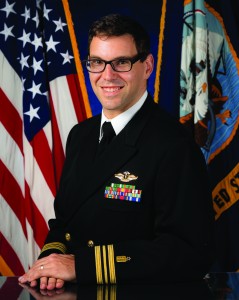With Veterans Day coinciding with Erev Shabbat for Parashat Vayera (Genesis 18-22), I wanted to share a word of Torah (d’var Torah) that bridges the two events. Parashat Vayera is, after all, full of passages that capture the imagination and ignite the Jewish soul!
Any Bar/Bat Mitzvah student would kill for this kind of subject matter: Abraham welcomes in Angels, the destruction of Sodom and Gomorrah, Isaac and Ishmael, and the Binding of Isaac. The portion is rich with material that calls out, “Darsheini! Preach about me!”
But deep in the dark crevices of the chapters, in parts that we don’t talk about in Hebrew School or from the pulpit, is a section that almost begs us to not look at it. Even the characters involved don’t want you to look at them. Beginning in Genesis 19:31, Lot and his daughters—the lone survivors of the destruction of Sodom—move into a cave.
The course of human history is a process of moving out of the caves. When people choose to live in caves, it should prompt us to ask why. The Torah provides a rationale: Fear. For fear of what might happen in the next town that they settle in, they move away from everyone and everything.
Fear in the daughters drives the subsequent events; in a jarring biblical passage, the daughters of Lot conspire to intoxicate their father and rape him. Fearing that all the earth has been destroyed as town after town is buried in fire and brimstone, they impregnate themselves with their father’s seed (You can see why the story is left out of most Hebrew School classes).
Lot and his daughters are hard to appreciate; their actions defy the morality expected from the same Torah, which is simultaneously introducing us to Abraham! These people are not Abrahamic.
But we need them. The Torah is telling us that Lot and his daughters are an essential part of our greater narrative.
They carry a story that is part of our religious experience. They tell the story of the few who have left their home only to return and not recognize it anymore. This Veterans Day, I hope you can see them as I do: broken spirits who stumble over themselves to be whole.
In Odysseus in America: Combat Trauma and Trials of Homecoming (2002), Jonathan Shay follows up Achilles in Vietnam by looking not at the battle but the afterward: the long—and sometimes painful —journey home to a foreign land. Shay worked with combat Veterans with PTSD at the VA Hospital in Boston to address the psychological devastation of warfare. In describing Moral Injury, he located an acutely spiritual loss in the stories and traumas of his patients. In Odysseus, he sees secondary and tertiary trauma around every corner as the combat Veteran with PTSD desperate plods homeward.
As stand-ins for combat Veterans, Lot and his daughters would be outstanding models for Shay (minus the traditional combat). Like many combat Vets with PTSD they show signs of survivors guilt: why were we saved? Were we really different? In the case of Lot, he crossed some significant moral lines that we like to believe nobody should ever cross in his exit of Sodom. This squad witnessed unspeakable suffering; they intimately know people who died. They feel they should be there.
Shay highlights two experiences of combat Veterans with PTSD returning home that directly relate to this family: “Anyone close to me will be harmed” and “my losses are irretrievable: I have to continue from here alone.” You can hear it in the voice of the older sister: “Our father is old, and there is not a man on earth to consort with us in the way of all the world. Come, let us make our father drink wine, and let us lie with him, that we may maintain life through our father.” We have to do this alone.
I highly encourage anyone with family that includes Combat Veterans with PTSD (diagnosed or undiagnosed) to read Jonathan Shay’s books. Book club them or just subtly say, “Hey, you might appreciate this take.” There are outstanding chapters on Restoration and Prevention that should be beacons of hope for all. There are amazing resources in this Jewish community and in the greater community for those struggling with PTSD and secondary traumas associated with PTSD.
But I want to give credit to the Torah portion that doesn’t turn a blind eye to them. It includes Lot and his daughters in prime narrative space. It welcomes them into the story despite the unspeakable tragedy of their lives. Bluntly: Lot and his daughters show us the enormity of the disaster that we can add to our lives even after the initial trauma. Be it drugs and alcohol, unhealthy relationships, self-destructive actions: getting home—getting to safety—is the hard part. Like our characters, sometimes their actions are incompatible with society. But we keep space for them anyway. They are part of our story.
Our community has Combat Veterans with PTSD. From WWII. From Korea and Vietnam, who especially knew the experience of a cold home-coming. From Iraq and Afghanistan. They are grandparents and parents in this community. They are teachers and doctors and rabbis in this community. They are technicians and blue-collar workers in this community. And sometimes, often, they are on the periphery—alone, staring in. We commit as a community to seeing them, to counting them, to hearing their story; we commit to being home.
Rabbi Yonatan M. Warren, BCC
Lieutenant Commander
U.S. Navy Chaplain Corps


